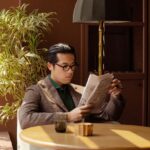Editor’s Note: This story originally appeared in Volume 5 of B.H. Magazine. To get your copy (and access to future issues), subscribe here.
If recent events are any indication, then it’s hard to contend fashion has gotten past its transparency problem. From ongoing woes involving supply chain mismanagement to criticism over arbitrary price increases at European luxury houses, it’s clear the industry’s biggest players have yet to master the art of doing business openly – and with the proverbial seams showing.
Such cultural and commercial conditions underline the success of Front Office: a diminutive, Melbourne-based brand that is the brainchild of Mr. Ken Sakata. It functions as a design studio, fashion label, and quality ‘content’ platform all rolled into one. Like a number of other key opinion leaders in the niche-at-scale community of internet menswear, Sakata built the audience that has gradually evolved into his customer base using social media’s megaphone amplification.
On TikTok and Instagram, Front Office’s videos regularly garner hundreds of thousands, if not millions of views; flying in the face of conventional wisdom that popular content should be as dumbed down as possible. This year, Sakata has already interviewed Linda Muir, Oscar-nominated costume designer of Nosferatu; and chronicled, in exhaustive detail, the work that went into his sellout sportswear capsule with Umbro.

Sakata’s signature move, however– the one which turned him into a godhead among chronically online fashion bros – is the video essay. In one illustrative example (uploaded in 2024), he dissects key differences between Japanese and American workwear, to better explain the culturally fused DNA of the Front Office sashiori jacket ($499). By the time our story goes to print, that essay will have accrued more than 1.5 million views.
Sakata’s content varies widely in scope and subject (in another, he considers how historical value judgments have influenced the prestige of the colour purple). But the one throughline is his knack for making seemingly inaccessible concepts accessible – within the span of about three minutes.
In preparation for this story, I spent an hour with Sakata in the Front Office show room; which doubles as a studio and retail store on weekends. Early into our discussion, it becomes apparent that much of what is appealing about the brand extends naturally from Sakata himself.
A handsome third-culture kid – born to Japanese and Singaporean parents – with bags beneath the eyes, he’s the antithesis of snake-oil-slick fashion insiders like Emily Oberg (Sporty & Rich) or Ronnie Fieg (Kith).
All around us, the space exudes the patina of genuine workaday creativity. On Saturdays and Sundays, the Front Office team won’t be pulling you coffee from a co-branded $17,000 espresso machine; but shoppers can definitely ask to borrow Sakata’s copy of Ideas from Massimo Osti – along with other dog-eared references you’ll see scattered around the desk where he makes videos.
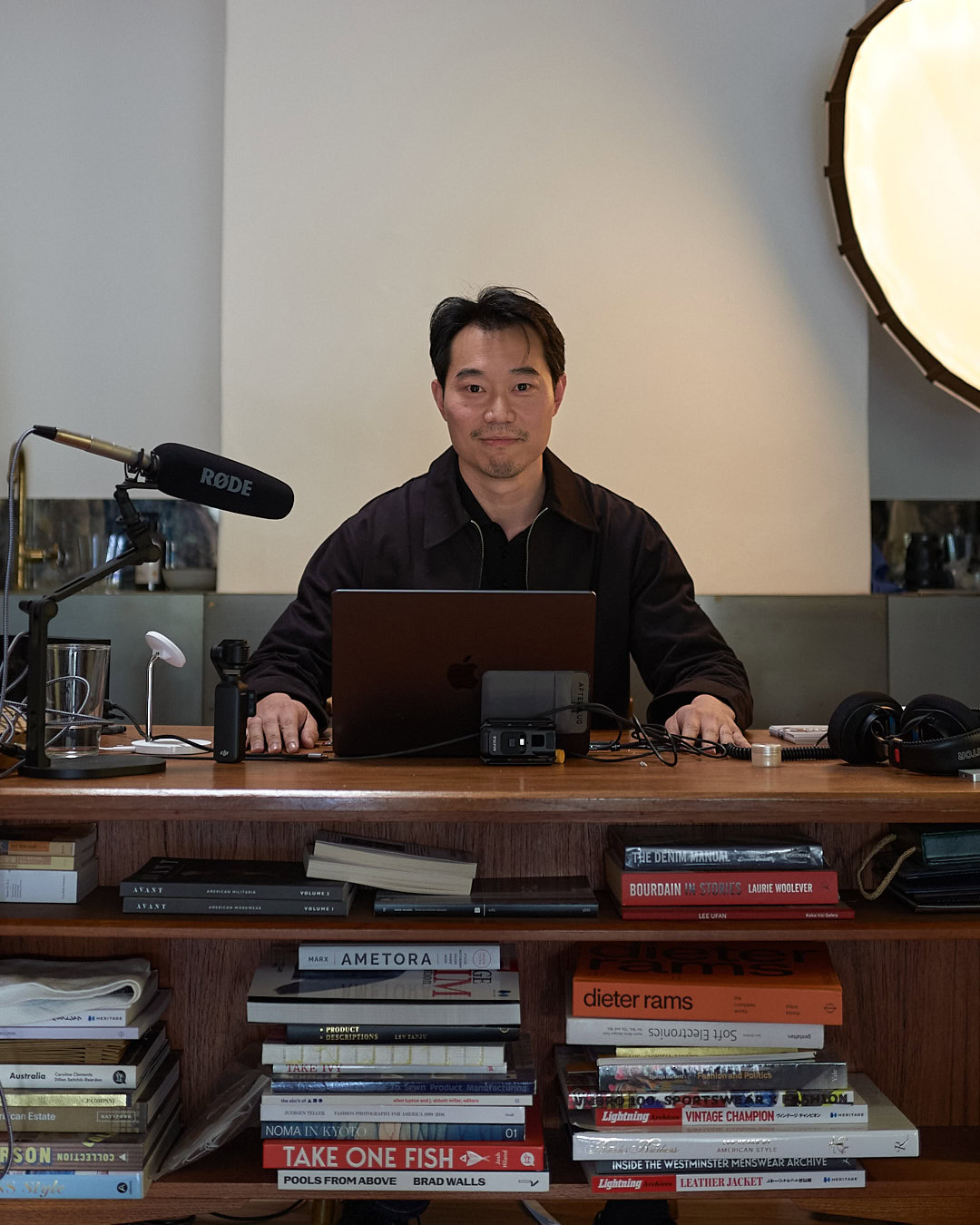
Great as these volumes look on display, Sakata is serious about studying them cover to cover. A medical doctor by training, he finally quit the profession last November to pursue fashion full-time, all while using his med-school-wired brain to inhale copious amounts of historical texts and technical data.
“Even going back five years, I wasn’t really interested in capital-F fashion,” says Sakata. At the time, the self-trained designer was working as an emergency doctor on the Covid frontline; and his first foray into clothing was a distraction from the lunacy of vaccination counselling and daily quarantines.
“I started a satirical football account [called Queensland FC]. It was clearly a joke, because I’d never played football and was middle-aged. But because everyone was at home and nobody had access to any other entertainment, the account grew and grew,” explains Sakata.
“Eventually, I found this bootleg t-shirt company in Geelong who thought it’d be funny to put my face on a tee – next to Buddy Franklin,” he continues. “They made 50 shirts for $40 apiece, and within a week had sold out. That’s when I remember thinking, ‘okay, we need to do this again’. My day job was just so incredibly serious: it made no allowances for humour, personal expression or creativity.”

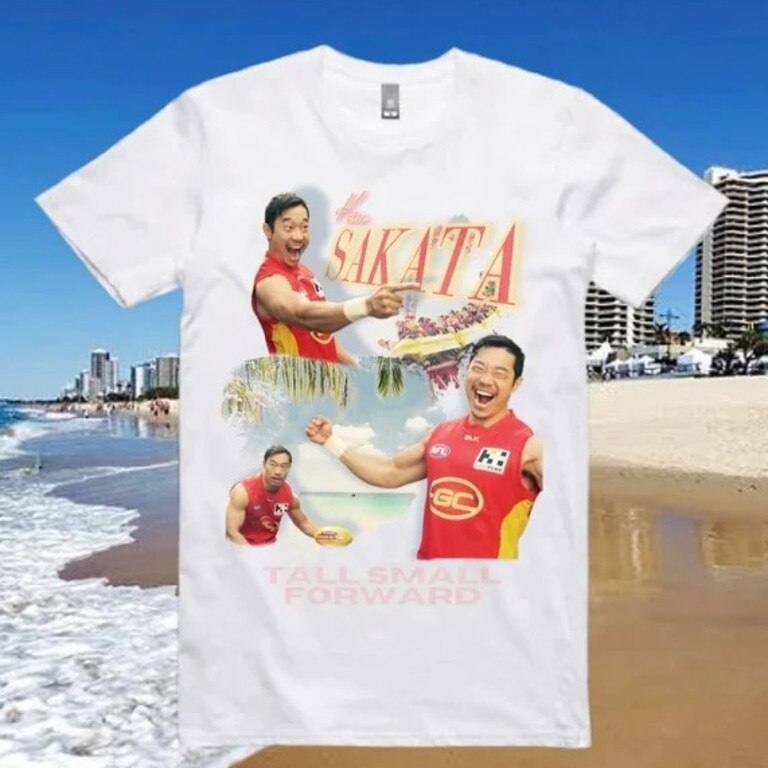
Queensland FC was by no means a runaway commercial success, but with Front Office, it’s now clear Sakata has honed in on the strengths of that project – while scaling and evolving. Just look at the way he leverages online audiences.
While most small businesses treat social media as a pipeline to sales, Sakata has managed to bend it to the greater purpose of good design. “If a video becomes popular, and discussion of its main themes is popular, then I know I’ve got a shot at designing something which resonates with our audience.” It’s an approach that is quietly radical: a rejection of the thesis, as Karl Lagerfeld declared, that designers must be “dictators of taste”.
Front Office fans have certainly gravitated toward this gentler, more inclusive vision of design. But as Sakata explains, his “sounding board” methodology is as much a personal manifesto as it is a workflow strategy.
“In fashion, the traditional industry model usually involves one person in the backroom designing a garment. Then, 12 to 18 months later, this gets handed off to a marketing team or creative agency who creates a secondary narrative in order to sell it.”
Sakata continues: “We’re fortunate enough to be a small company where the quote, unquote ‘marketer’ is the designer – so the message is one and the same. I personally think that creating a whole other narrative, just to sell stuff, is embarrassing. With Front Office, the goal is to be known for ideas in design – that’s really it. And the more we talk about our ideas, consistently, the more we can earn that reputation.”
‘All talk’ definitely isn’t how we’d describe Sakata, though. In addition to his on-camera duties, the Front Office founder throws himself into every aspect of product development to enhance his own technical knowledge.

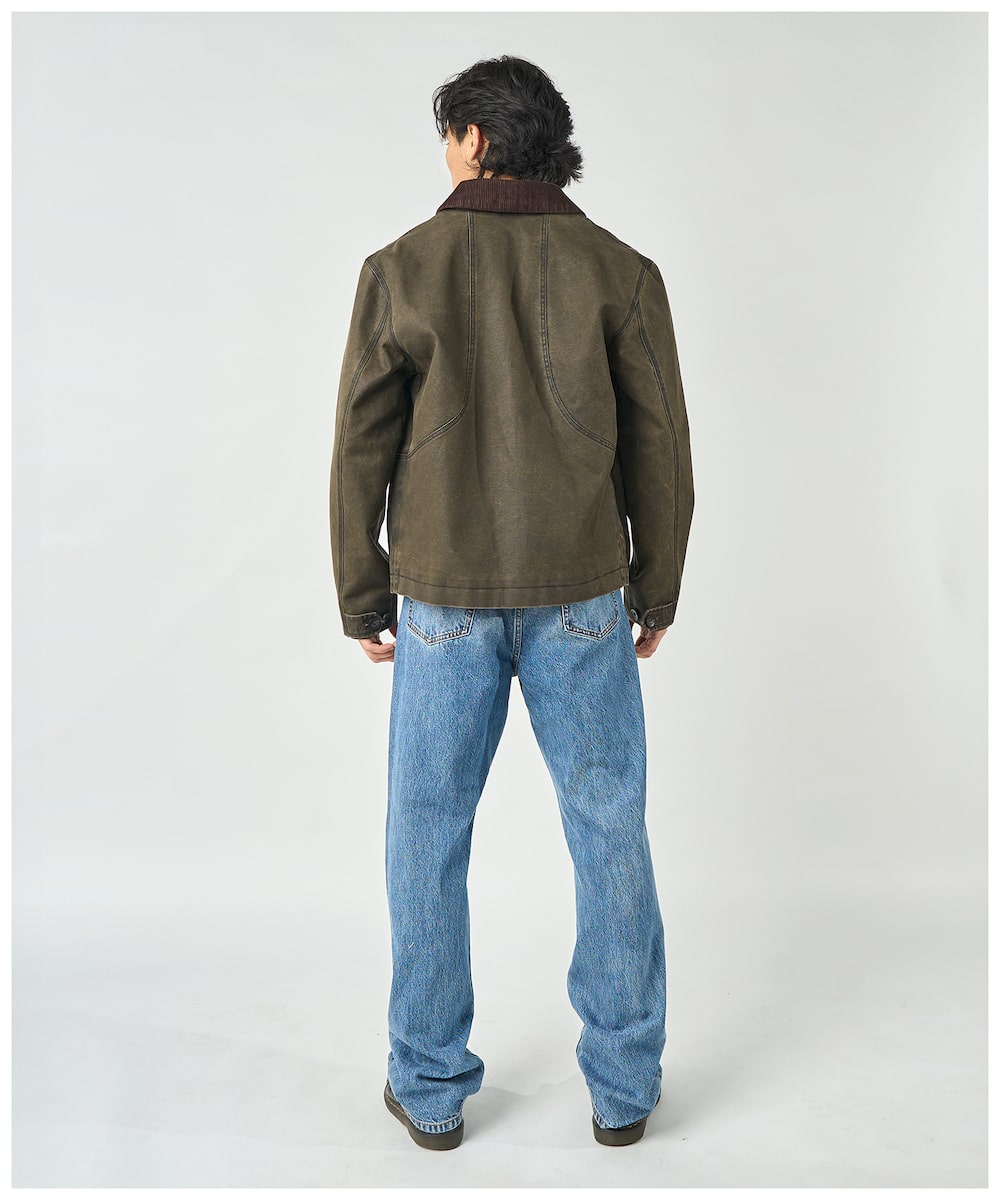
Pieces like the brand’s best-selling Gatherer jacket ($499) – hunting-inspired outerwear in denim or cotton canvas– all originate with Sakata, who then collaborates with a few specialists to bring each design to life.
“We work with a professional pattern maker on every one of our samples,” says Sakata. “At this scale, a lot of brands rely on factories to do all their sourcing – patterns, fabrics, zips. But if you conceptualise design as a ‘boat’, then it makes sense to pick each individual ‘oar’ yourself, rather than relying on somebody who’s not on the same page.”
This maximalist pursuit has taken Sakata to Shanghai textile shows, denim mills in Hiroshima, and Portuguese trouser firms; yet he is upfront about correcting my assumption that Front Office is fully Australia-made.
As small business owners in this country know all too well, the romance of making something locally is quickly overwhelmed by the reality of high (verging on punishing) running costs. Sakata recounts a nightmare scenario last year, in which two Melbourne factories he’d partnered with to make jeans, shuttered mid-production.
“They basically called me up and said, ‘we’re done’. And when I asked how we might salvage the remaining orders, the response was ‘dunno’. That meant our deliveries were eight weeks late, and for a bigger business, that kind of delay is potentially fatal.”
The solution was to embrace established Chinese manufacturers – eight in total – all of which Sakata has visited personally.
“To the average consumer, ‘Made in China’ has a certain connotation. But as with any huge industry, you have great factories, middle-of-the-road factories, and terrible factories,” he says, even-handedly. “Do your due diligence – go and see what you’re getting yourself into, otherwise you run the risk of being wilfully ignorant.”
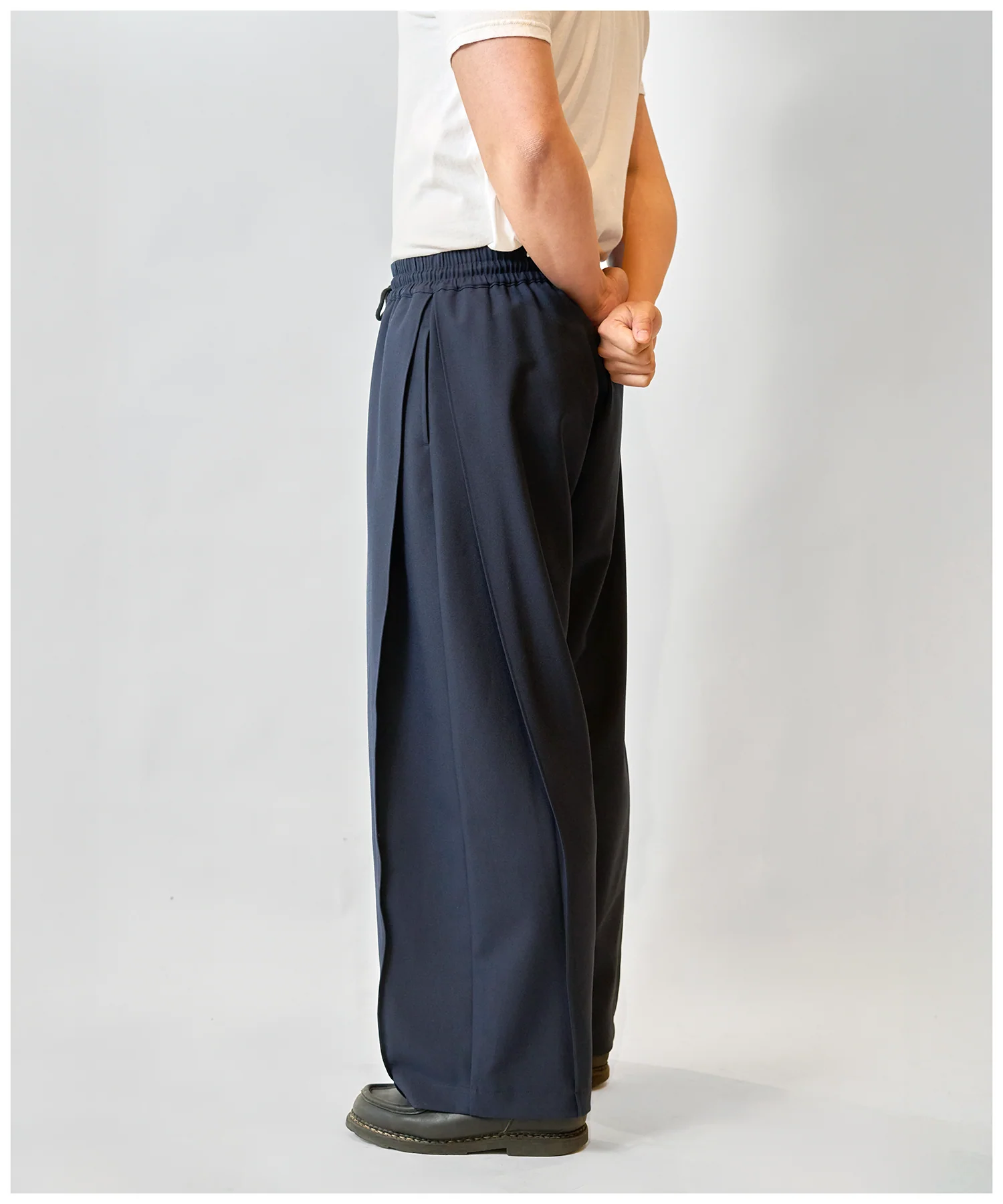
Even if much of Front Office’s product is made overseas, the mindset used to conceive and develop it remains quintessentially Australian. In the closing minutes of our conversation, I ask Sakata what his brand’s first principles are. He cites “comfort”, “quiet enjoyment”, and “a reasonable [price-to-quality] ratio” in reply, all ideas that resonate with local consumers, hardwired into daily essentials like the brand’s side-pleated trackpants ($249).
“In a lot of ways, the fashion scene has become about parties and runways, not clothes. People feel excluded by that: certainly, a huge number of Australian guys. The shift in perspective we’re encouraging is to treat ‘fashion’ as decision-making,” says Sakata.
“It’s a series of decisions about design, personal expression, and to some extent, science and engineering. To me, that’s always been the obvious outlet for people to enjoy this stuff – without feeling self-conscious.”
If you’ve enjoyed this interview with Ken Sakata, consider a few more of our favourite stories – direct from the pages of B.H. Magazine:
- Adrien Brody Is Human After All
- Derek Guy Has Entered The Chat
- The True Cost Of Luxury: Confessions Of A Restaurant Critic
- The Story Of ‘Eastern Brown’: Designing The B.H. 911 Carrera GTS Cabriolet
- The Empire Steps Back: Western Diplomacy In The Trump Era
- Cam Green On Mindset, Motivation, & Why He Joined Rado’s Ranks
